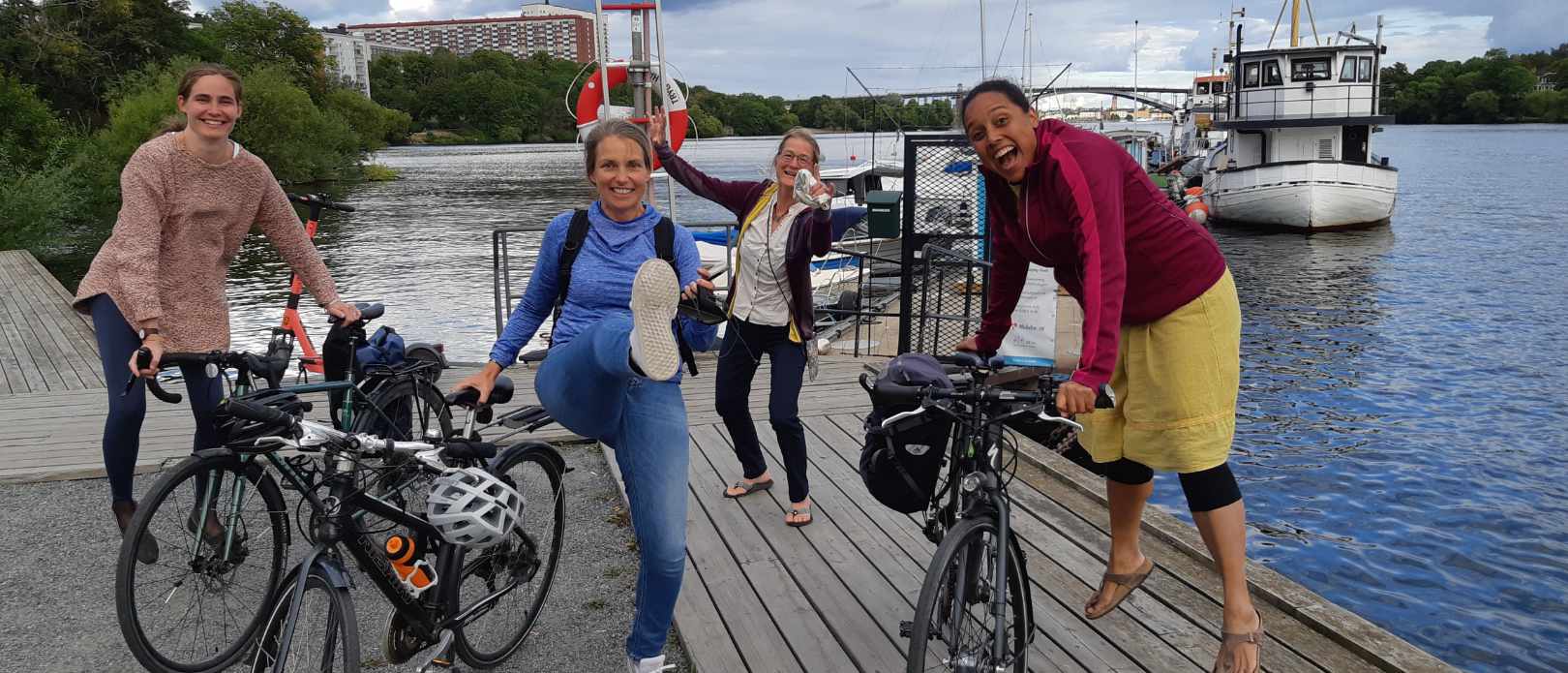RESEARCH METHODS
What it takes to make different approaches work together

Learning from others’ experiences is just as important as learning about their successful expeditions. In their paper, Caroline Schill (left), Therese Lindahl, Nanda Wijermans and Maja Schlüter (back) reflect on their collaboration.
Researchers invite readers “behind the scenes” to share their experiences combining agent-based modelling and controlled behavioural experiments
• Four researchers reflect on more than a decade of collaboration and combining of approaches
• Though still unconventional, agent-based modelling is an extremely enabling combination partner
• Learning from others’ experiences is just as important as learning about their insights to advance our understanding about the complex (social) worlds we live in
COLLECTIVE LEARNING IN SCIENCE: Process learnings from applying different research approaches can be just as important as the description of their (successful) outcomes.
This is the main conclusion from a paper published in International Journal of Social Research Methodology, written by centre researchers Nanda Wijermans, Caroline Schill, Therese Lindahl and Maja Schlüter.
Shared interest, different approaches
In their paper, the four researchers reflect on their collaboration which started back in 2012: what worked and what did not? How did it differ from other similar collaborations?
All four shared a scientific interest in understanding how people can manage their resources sustainably’ but they approached the topic with different methods.
Wijermans and Schlüter use agent-based modelling (ABM) as their main method, while Schill and Lindahl use controlled behavioural experiments (bExp).
ABM is a computer simulation approach where researchers can analyse how a variety of actors interact with each other and with the environment they are part of. The approach can reveal intricate interactions among stakeholders and help prevent unintended policy outcomes.
Trust and tension
Controlled behavioural experiments are primarily used to test hypotheses about human behaviour, the cause and effect of certain actions, usually conducted by students in a lab.
Can these two approaches be combined?
Yes, argue Wijermans and her colleagues, even in more ways than one, but it is not a straightforward process. Apart from the time investment, certain non-negotiable aspects needed to be clarified.
We benefited from a robust collaboration and the trust we developed for each other.
Nanda Wijermans lead author
Tension was kept at a minimum by maintaining a high tolerance for speaking up, and high curiosity in listening to others view points, and finding solutions in congruence with the rigour needed for both approaches.
Furthermore, using ABM influenced their research profoundly. “It created a space for curiosity-driven learning that helped us understand better the phenomena we sought to study.”
Exploring new terrain
Wijermans and her colleagues hope their ‘behind-the-scenes’ paper can encourage others to share their own challenges when exploring and mapping new, methodological ground.
“Learning from others’ experiences is just as important as learning about their successful expeditions. To advance our understanding about the complex worlds we live in we need to actively engage in collective learning about research processes,” Wijermans and her colleagues conclude.
Wijermans, N., Schill, C., Lindahl, T., & Schlüter, M. 2022. Combining approaches: Looking behind the scenes of integrating multiple types of evidence from controlled behavioural experiments through agent-based modelling, International Journal of Social Research Methodology, 25:4, 569-581, DOI: 10.1080/13645579.2022.2050120








